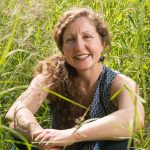Real vs. Fake Forests
What makes a forest a forest? This simple question becomes much more complicated, depending on who you ask. Thankfully, Dr. Dominick DellaSala, President and Chief Scientist of the Geos Institute, helps us explore this question and settle the debate in a chapter on “Fake” vs “Real” forests that will be published in The World’s Biomes, scheduled to be released in 2020. Topics that will be explored include:
- Does planting trees compensate for cutting down a forest?
- Can we truly see a forest for more than just the trees?
 If a tree grows in a forest, does that make it a forest? Industry classifies forests as “an area at minimum 120 ft wide, 1 acre minimum wide, with at least 10% forest cover.” Does that sound like a forest to you?
If a tree grows in a forest, does that make it a forest? Industry classifies forests as “an area at minimum 120 ft wide, 1 acre minimum wide, with at least 10% forest cover.” Does that sound like a forest to you?
The US Forest Service is an arm of the USDA. The department of agriculture’s focus is growing crops. Stated plainly, that means the Forest Service sees trees as crops. This typically means tree plantations are planted in dense rows like corn to be thinned, sprayed with chemicals, and fertilized for the fastest growing cycle for logging and the highest “return on investment.”
The Green New Deal: Finally climate policy informed by science
The proposal from Democrats is the most comprehensive response yet to the scientists’ warnings, to implement it would be realism, not radicalism
By William J. Ripple, Dominick A. DellaSala and Franz Baumann
 Our nation has a long history of scientific innovation that has produced the computers that run our businesses, new discoveries in medicines that can extend our lives, and the rockets that take us to distant worlds in search of other life. Photo: Congresswoman Alexandria Ocasio-Cortez and senator Ed Markey present their Green New Deal resolution to reporters (Credit: 350.org)
Our nation has a long history of scientific innovation that has produced the computers that run our businesses, new discoveries in medicines that can extend our lives, and the rockets that take us to distant worlds in search of other life. Photo: Congresswoman Alexandria Ocasio-Cortez and senator Ed Markey present their Green New Deal resolution to reporters (Credit: 350.org)
In short, science is our best hope to enable informed choices about our future. Big ideas like president Roosevelt’s New Deal also gave our nation hope for reversing the downward economic spiral of the 1930s with government programmes that still benefit us today. However, when it comes to a safe climate, science and policy have operated in a vacuum.
The Green New Deal in Congress provides an opportunity for bringing both science and policy together in shaping a sustainable future for our nation that avoids a pending crisis to the planet’s life support systems if we do not act boldly and promptly.
Oregon Needs New Approach to Forest, Fire Management
For Immediate Release, March 13, 2019
Contacts: Luke Ruediger, Applegate Network, Klamath Forest Alliance, (541) 890-8974, elliottcreek@yahoo.com | Dominick A. DellaSala, Geos Institute, (541) 621-7223, dominick@geosinstitute.org | Timothy Ingalsbee, Fire Fighters United for Safety, Ethics, and Ecology, (541) 338-7671, fire@efn.org | Randi Spivak, Center for Biological Diversity, (310) 779-4894, rspivak@biologicaldiversity.org
Oregon Needs New Approach to Forest, Fire Management
Gov. Brown’s Wildfire Council Ignores Wildfire Science, Won’t Make Communities Safe
ASHLAND, Ore.― Conservation groups are urging Oregon Gov. Kate Brown to include proven methods for protecting communities and firefighters in the Governor’s Council on Wildfire Response. In a recent letter to the governor, the groups outline six recommendations as part of a proposed community protection alternative plan.
The governor should include expertise in defensible space and wildfire risk planning, climate change and forest-fire ecology on the Council, the groups said. Brown also should ensure a transparent process for the public and scientists to contribute to the council’s work.
“Our community protection alternative would most effectively accomplish the governor’s goals of keeping the public safe and protecting Oregon’s environment, which brings residents, visitors and businesses to our state,” said Luke Ruediger with the Applegate Network and Klamath Forest Alliance. “Unfortunately, public promises to eliminate smoke and stop wildfires are not realistic and are misleading. It may be counter intuitive, but we need more fire in the backcountry, where wildfires benefit forests and reduce fuels.”
Investing in home and firefighter protections will do far more to keep communities and firefighters safe than thinning backcountry forests. Research found that wildfires occur in only about 1 percent of U.S. Forest Service areas that have undergone fuel-reduction treatments. This suggests that landscape-scale thinning is not a cost-effective means of addressing wildfires.
“The chance of a forest fire encountering an area where fuels have been reduced is about 1 percent, but we’re 100 percent certain where there are communities at risk from wildfires,” said Randi Spivak, public lands director at the Center for Biological Diversity. “Focusing resources on existing developments, rather than on logging in the backcountry, is the best way to protect communities with limited tax dollars.”
Wildfires are a natural and necessary ecological process. But a warming climate, fire suppression, clearcutting, and post-fire logging and tree planting practices have transformed portions of Oregon’s fire-resilient older forests to fire-prone landscapes.
Oregon also suffers from a lack of fire-safe building siting and construction practices. Homes that are easily ignited by embers are responsible for feeding urban conflagrations like those in Santa Rosa and Paradise, Calif. This risk can be greatly reduced by proven defensible space measures that prepare homes from the home outward instead of logging from wildlands inward.
“Thinning is appropriate in densely planted tree plantations that act as fire’s gasoline, but is being oversold as a panacea to stop fires and smoke that it simply cannot deliver on—especially in a warming climate where large fires overwhelm firefighting forces regardless of thinning efforts, said Dominick A. DellaSala, chief scientist with the Geos Institute. “Thinning forests away from houses does nothing to prevent those houses from burning.”
“Firefighters are needlessly being exposed to extra risk trying to protect vulnerable homes and communities, said Timothy Ingalsbee, executive director of Firefighters United for Safety, Ethics, and Ecology (FUSEE). “If homes and communities are proactively prepared for fire, this dramatically improves their chance of surviving fire from any source or location, and greatly expands opportunities to ecologically managed fires in remote natural areas for the many benefits they provide in fuels reduction and forest restoration–virtually for free.”
The Community Wildfire Protection Alternative recommendations:
- Emphasize reducing home ignitability and discourage new development in naturally fire-prone areas.
- Target thinning and prescribed fire in strategic locations surrounding communities on both public and private lands within a quarter-mile of residential lands. This will help provide safe spaces for wildlands firefighters.
- Address particulate pollution by improving state air-quality standards and restricting emissions from uses such as wood-burning stoves, automobiles and agriculture.
- Provide funding for fire/smoke shelters, tax rebates for HEPA filters and upgrades to HVAC systems, and aid to the most health-vulnerable segments of society by working with health care providers.
- Utilize both managed wildland fires in the backcountry and prescribed burns under safe conditions for multiple ecosystem benefits—including the most cost-effective way to restore forest ecosystems to have more natural amounts of burnable material.
- Prohibit logging practices that can increase unnatural wildfire risks such as clearcut/modified clearcutting, postfire logging, removal of large fire-resistant trees, excessive opening of forest canopies, and commercial logging operations that produce highly flammable, excess slash that is expensive and most often not feasible to remove.
Community Fire Protection Alternative for Fire Safety
Conservation groups announced a new fire protection alternative designed to protect homes and firefighters from wildfires as a counter to pro-logging approaches that create fire- and climate-unsafe landscapes. The alternative was sent to Oregon Governor Kate Brown and has relevance to fire fighting efforts in California as well, where California Governor Gavin Newsom has proposed massive logging that will do nothing to prepare communities for wildfire safety.
Read the response to Governor Brown’s Executive Order on Oregon’s Wildfire Response Council
Don’t Be Fooled by “Fake Forests”
 by Dominick A. DellaSala, Ph. D, Chief Scientist, Geos Institute
by Dominick A. DellaSala, Ph. D, Chief Scientist, Geos Institute
Originally posted on the Oregon Wild website
If a tree grows in a forest, does that make it a forest? Does planting trees compensate for cutting down a forest? How do we know we are in a forest or an unreasonable facsimile (“fake”) there of?
A new publication “The World’s Biomes” is set for release in libraries globally in 2020. It will feature my chapter on fake vs. real forests. Contact me at dominick@geosinstitute.org for an advanced copy of this chapter.
In the meantime, here’s a sneak preview of what’s inside a real vs. fake forest.
Forest Defense is Climate Defense
Dominick DellaSala’s presentation in Portland at a public event in Portland hosted by Oregon Wild.
Forest Defense is Climate Defense
Dominick DellaSala’s presentation in Portland at a public event in Portland hosted by Oregon Wild.
The Paradise fire: Could it happen to us?
By Dominick DellaSala and Dennis Odion
Originally published on December 23, 2018 in the Medford Mail Tribune
Smoke from wildfires is gone for now, but this year’s tragic California fires are a stark reminder of what could happen here. There are many take-aways that can help us prepare.
The Camp Fire of Paradise Valley, which took the lives of 88 people and destroyed thousands of structures, had nothing to do with whether the forest was thinned. It was a structure-to-structure fire. Startling images from GoogleEarth reveal surrounding trees untouched while homes burned to the ground. Blown by high winds, embers advanced miles ahead of the flame front, landing on unprepared homes and taking them out in a domino-like fashion.
In Southern California, tornado-force winds are known to spread fire rapidly through shrublands that at one time supported diverse wildlife habitat, but are now sprawling developments. Wildlands were gobbled up by developers during a mid-20th century climate-cool down that made fire suppression effective and created a false sense of security.
California now has unbridled traffic jams and global warming-related fires that destroy entire towns with no end in sight, as over 1 million new homes are planned in harm’s way by 2050. Insurance companies also have taken notice, anticipating increased wildfires related to global warming that will impact everybody’s bottom line.
So, what have we learned that can be applied in the Rogue Valley?
The Paradise fire: Could it happen to us?
By Dominick DellaSala and Dennis Odion
Originally published on December 23, 2018 in the Medford Mail Tribune
Smoke from wildfires is gone for now, but this year’s tragic California fires are a stark reminder of what could happen here. There are many take-aways that can help us prepare.
The Camp Fire of Paradise Valley, which took the lives of 88 people and destroyed thousands of structures, had nothing to do with whether the forest was thinned. It was a structure-to-structure fire. Startling images from GoogleEarth reveal surrounding trees untouched while homes burned to the ground. Blown by high winds, embers advanced miles ahead of the flame front, landing on unprepared homes and taking them out in a domino-like fashion.
In Southern California, tornado-force winds are known to spread fire rapidly through shrublands that at one time supported diverse wildlife habitat, but are now sprawling developments. Wildlands were gobbled up by developers during a mid-20th century climate-cool down that made fire suppression effective and created a false sense of security.
California now has unbridled traffic jams and global warming-related fires that destroy entire towns with no end in sight, as over 1 million new homes are planned in harm’s way by 2050. Insurance companies also have taken notice, anticipating increased wildfires related to global warming that will impact everybody’s bottom line.
So, what have we learned that can be applied in the Rogue Valley?
Are feds over-fighting fires? Critics point to this blaze
By Adam Aton, E&E News reporter, originally published Thursday, December 13, 2018

Firefighters saved the homes. Then they went into the woods.
California’s 2016 Soberanes Fire broke records for costing the most money to fight a wildfire — much of it in a national forest near Big Sur. That’s the kind of place where experts say fire is good; the ecosystem depends on it, and the flames don’t threaten people or property.
(Photo: Firefighters working to contain the 2016 Soberanes Fire in Los Padres National Forest in California. U.S. Forest Service — Los Padres National Forest/Facebook)
Instead of letting it burn, the Forest Service unleashed an air show. By the end, 3.5 million gallons of flame retardant blanketed the area. Bulldozers cut through 60 miles of woodland, costing the Forest Service as much as $1 million a day to repair, according to a new report.
That lesson threatens to be lost in the whiplash pace of fighting fires.
Latest News
Stay Updated!
Sign up to stay updated on our current initiatives and receive information you can use to build resilience in your community.

 Arsum is the Senior Adaptation and Coastal Resilience Specialist for the National Wildlife Federation’s Southcentral Region. In this role, she advances climate adaptation efforts, with a focus on nature-based approaches to address the impacts of climate change and extreme events across the Gulf region. She has authored and co-authored numerous publications on climate impact assessments and adaptation solutions. Additionally, she regularly participates in state-based coastal resilience and hazard mitigation planning across the Gulf, collaborating with regional and local stakeholders.
Arsum is the Senior Adaptation and Coastal Resilience Specialist for the National Wildlife Federation’s Southcentral Region. In this role, she advances climate adaptation efforts, with a focus on nature-based approaches to address the impacts of climate change and extreme events across the Gulf region. She has authored and co-authored numerous publications on climate impact assessments and adaptation solutions. Additionally, she regularly participates in state-based coastal resilience and hazard mitigation planning across the Gulf, collaborating with regional and local stakeholders. Frank is the former President of the Reinsurance Association of America. Frank currently serves on the Advisory Board of the OECD’s International Network for the Financial Management of Large-Scale Disasters, the RAND Center on Catastrophic Risk Management and Compensation, and the University of Cincinnati’s Carl H. Lindner III Center for Insurance and Risk Management Advisory Board.
Frank is the former President of the Reinsurance Association of America. Frank currently serves on the Advisory Board of the OECD’s International Network for the Financial Management of Large-Scale Disasters, the RAND Center on Catastrophic Risk Management and Compensation, and the University of Cincinnati’s Carl H. Lindner III Center for Insurance and Risk Management Advisory Board. Jim is a multilingual world traveler. Based in Bavaria during the 1970s, Jim spent most of this period in India, Afghanistan and Nepal, where he founded and operated a charitable medical clinic serving Tibetan Refugees. He settled in Oregon in 1983 on a forested ranch in the Umpqua National Forest.
Jim is a multilingual world traveler. Based in Bavaria during the 1970s, Jim spent most of this period in India, Afghanistan and Nepal, where he founded and operated a charitable medical clinic serving Tibetan Refugees. He settled in Oregon in 1983 on a forested ranch in the Umpqua National Forest. Dr. Micah Hahn is an Associate Professor of Environmental Health in the Institute for Circumpolar Health Studies at the University of Alaska-Anchorage. She received her joint PhD in Epidemiology / Environment and Resources from the University of Wisconsin-Madison and her MPH in Global Environmental Health from Emory University. Subsequently, she was a postdoctoral fellow for the CDC Climate and Health Program, and in this position worked collaboratively with the CDC Division of Vector-borne Diseases and the National Center for Atmospheric Research. Her research focuses on understanding the health impacts of climate change and working with communities to develop locally-relevant adaptation and resilience-building strategies. Dr. Hahn is also on the Management Team of the Alaska Climate Adaptation Science Center.
Dr. Micah Hahn is an Associate Professor of Environmental Health in the Institute for Circumpolar Health Studies at the University of Alaska-Anchorage. She received her joint PhD in Epidemiology / Environment and Resources from the University of Wisconsin-Madison and her MPH in Global Environmental Health from Emory University. Subsequently, she was a postdoctoral fellow for the CDC Climate and Health Program, and in this position worked collaboratively with the CDC Division of Vector-borne Diseases and the National Center for Atmospheric Research. Her research focuses on understanding the health impacts of climate change and working with communities to develop locally-relevant adaptation and resilience-building strategies. Dr. Hahn is also on the Management Team of the Alaska Climate Adaptation Science Center. Michael is a former Founding Principal of Resilient Cities Catalyst, a global non-profit helping cities and their partners tackle their toughest challenges. He is currently the Executive Director of Climate Resilience Academy at the University of Miami.
Michael is a former Founding Principal of Resilient Cities Catalyst, a global non-profit helping cities and their partners tackle their toughest challenges. He is currently the Executive Director of Climate Resilience Academy at the University of Miami. Dr. Quintus Jett is a consultant, educator, and strategist for public causes. He has a doctorate in Organizations & Management from Stanford University, and a two-decade faculty career which spans schools, departments, and programs of business, engineering, liberal studies, divinity, and public and nonprofit management. Following Hurricane Katrina in 2005, Dr. Jett launched a volunteer project in New Orleans, which enlisted residents, students from over a dozen colleges and universities, and hundreds of others to field map the city’s Gentilly district, Lower Ninth Ward, and New Orleans East. Dr. Jett is an innovator in higher education, bridging the divide between academic research and the other priorities of the modern university, including student access and diversity, community engagement, and providing foundations for life-long learning in today’s rapidly changing world.
Dr. Quintus Jett is a consultant, educator, and strategist for public causes. He has a doctorate in Organizations & Management from Stanford University, and a two-decade faculty career which spans schools, departments, and programs of business, engineering, liberal studies, divinity, and public and nonprofit management. Following Hurricane Katrina in 2005, Dr. Jett launched a volunteer project in New Orleans, which enlisted residents, students from over a dozen colleges and universities, and hundreds of others to field map the city’s Gentilly district, Lower Ninth Ward, and New Orleans East. Dr. Jett is an innovator in higher education, bridging the divide between academic research and the other priorities of the modern university, including student access and diversity, community engagement, and providing foundations for life-long learning in today’s rapidly changing world. Scott is Monfort Professor of Atmospheric Science at Colorado State University. He has written about 100 publications in the peer-reviewed climate literature, is a former editor of the Journal of Climate, and served for five years as founding Science Chair of the North American Carbon Program.
Scott is Monfort Professor of Atmospheric Science at Colorado State University. He has written about 100 publications in the peer-reviewed climate literature, is a former editor of the Journal of Climate, and served for five years as founding Science Chair of the North American Carbon Program. Linda has many years of experience in disaster preparedness and resilience. She has been an elected official on the Linn County Iowa Board of Supervisors, Chair of the Metropolitan Planning Organization, the East Central Iowa Council of Governments, the statewide Mental Health Developmental Disability and the Linn County Board of Health. Langston is a former president of the National Association of Counties (2013-2014).
Linda has many years of experience in disaster preparedness and resilience. She has been an elected official on the Linn County Iowa Board of Supervisors, Chair of the Metropolitan Planning Organization, the East Central Iowa Council of Governments, the statewide Mental Health Developmental Disability and the Linn County Board of Health. Langston is a former president of the National Association of Counties (2013-2014). Ken works with families and organizations as a mediator, organizational consultant, trainer and facilitator. Along with his passion for helping people prepare for and reduce climate change, Ken also volunteers as a mediator through Mediation Works and is passionate about supporting youth through mentoring with Boys to Men of Southern Oregon.
Ken works with families and organizations as a mediator, organizational consultant, trainer and facilitator. Along with his passion for helping people prepare for and reduce climate change, Ken also volunteers as a mediator through Mediation Works and is passionate about supporting youth through mentoring with Boys to Men of Southern Oregon. Matthew is a retired high school teacher who was once honored as Oregon High School Social Studies Teacher of the Year. Before his teaching career he was in the restaurant business in Portland. He is also a lawyer who has been a member of the Oregon State Bar Association since 1980.
Matthew is a retired high school teacher who was once honored as Oregon High School Social Studies Teacher of the Year. Before his teaching career he was in the restaurant business in Portland. He is also a lawyer who has been a member of the Oregon State Bar Association since 1980. Andrea is the Resilience Policy Advisor for the North Carolina Office of Recovery and Resiliency. She works across state agencies and with local governments to increase the state’s resilience to the impacts of climate change.
Andrea is the Resilience Policy Advisor for the North Carolina Office of Recovery and Resiliency. She works across state agencies and with local governments to increase the state’s resilience to the impacts of climate change.